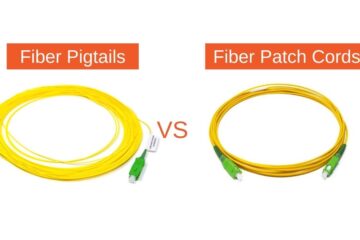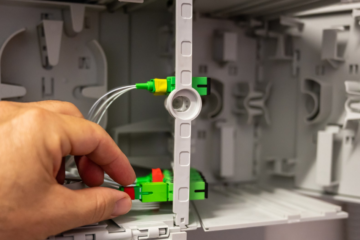
Fiber optics was born to revolutionize the industry in several aspects. It can be used for several purposes, among them in fiber optic sensor.
Although not being a new technology (since the first photonic sensor was patented in the mid 60’s), is still used and offers lots of benefits like a fast detection of problems, avoiding irremediable consequences.
What is a fiber optic sensor?
Fiber optic sensors use light as it travels along the fiber to help in detecting vibrations, changes in temperature or some type of strain in different environments where it is adapted.
The use of these sensors is becoming more and more useful in monitoring movements during the construction and operation of tunnels, bridges, mines, buildings and many other infrastructure.
Where is fiber sensing most used?
On railways and highways, they are used to detect and prevent rock falls, landslides, traffic volume and accidents and can also help in detecting leaks in oil, gas or water pipelines.
In sewers we can monitor flow velocity and temperature allowing early detection of flow restrictions and blockages, anticipating floods.
These are some examples of where fiber optic sensors are more used but there are more situations where this instrument is very useful.
The extremely reduced dimension of the cables used as sensors, absence of electrical power, and the long distance covered, makes these sensors very attractive to many applications.
Why not electrical sensors?
As with all the systems, it uses passive components where no electrical power is used. The optical sensor has great advantages comparing to the conventional electrical sensors since the first ones use the fiber itself to create a continuous line of sensing (distributed) or in very small distances (discrete).
The advantages of fiber optic sensor are several:
- It is immune to electromagnetic interference (EMI) and does not cause EMI;
- No electrical power is required along with the fiber and sensors. Making the sensors intrinsically safe (no risk of fire or explosion) and it can be used in ATEX locations;
- Fiber optic cables are small, lightweight and easy to install, but still robust;
- Long-distance monitoring without amplification (>20km);
- The same fiber can be used for multiple sensing (temperature, strain, bending, tension, pressure, vibration, acoustics);
- The sensing element is silica (glass), which is an inert material, and not susceptible to corrosion, thus allows very long-term monitoring (full asset life) without degradation.
Types of fiber optic sensors
We can divide the fiber optic sensor into two groups:
- The distributed fiber sensors
With this technology, we can monitor it continuously and throughout tens of kilometers.
In the distributed sensors are used the characteristics of the light transmission to measure the entire fiber section. This way it’s possible to have a good idea of the local where the anomaly happened, with an accuracy of less than 1 meter.
This technology also uses the Brillouin Backscattered light. This means that when the light travels along with the fiber, interacts with the particles in the fiber creating a backscattered light that depends on the reflective index of the material. This reflective index changes with compression or distension of the fiber, resulting in changes in the power and wavelength (stokes and anti-stokes) of the backscattered light that we can measure.
Comparing the changes in the backscattered light before and after the event, we can calculate variation in temperature, strain, bending, tension, pressure, vibration, and acoustics.
- Discrete or point Based fiber sensors
The discrete fiber sensors use FBG (Fiber Bragg Grating) as a sensor. FBG is a grading made by a laser in the fiber in such a way that one specific wavelength is reflected.
The interrogator injects a white light into the fiber and each FBG sensor reflects one wavelength. The temperature and strain changes this reflected light wavelength
We can repeat this sensor in the fiber channel up to 40 times creating 40 sensors in the same fiber. One interrogator can support up to 32 fiber channels.
These sensors can also be used to monitor strain, temperature, displacement or extension, crack width, tilt or inclination, pressure or load, vibration, acceleration, humidity, chemical concentrations and more.
If you’re looking to monitor projects or any type of construction, a fiber optic sensor is a great ally to avoid huge problems in different environments. Once it’s installed, it’s easier and more efficient to predict various anomalies that can compromise society.
Related articles: Clean Fiber Connectors? Discover Why, How and When to Do it!









